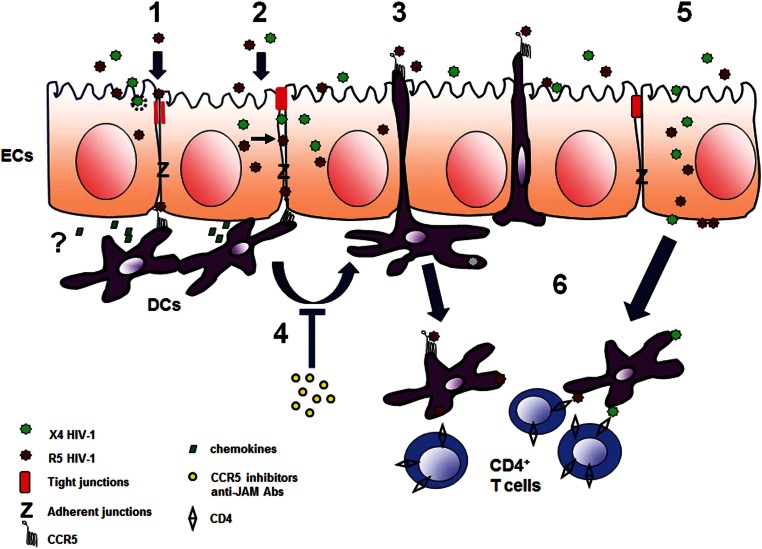Figure 12.
Schematized proposed mechanism of HIV-1 penetration across the intestinal epithelium and DCs recruitment.
HIV virions/gp120 env protein that interact with the apical surface of intestinal epithelial cells (ECs) can transiently open the TJs of EC (1) or enter into the EC and be released from the cytoplasm to the intercellular space (2) to create a gradient between adjacent EC and reach subepithelial DCs. Chemokines secreted by EC might possibly accumulate locally. The interaction between the env and the CCR5 receptor expressed on DCs induces within 30 min the elongation of DC's dendrites and migration of DCs across the epithelium to further capture luminal R5 virions (3). The process is inhibited by CCR5 inhibitors and anti-JAM antibodies (Abs) (4). Alternatively, virions can be transcytosed through ECs (5) and be captured by lamina propria cells. Migrated DCs can shuttle across the barrier and return to the lamina propria when appropriately stimulated. The captured virus is transmitted from DC to CD4+ T cells (6) or directly transported to lymph nodes to further spread the infection.

